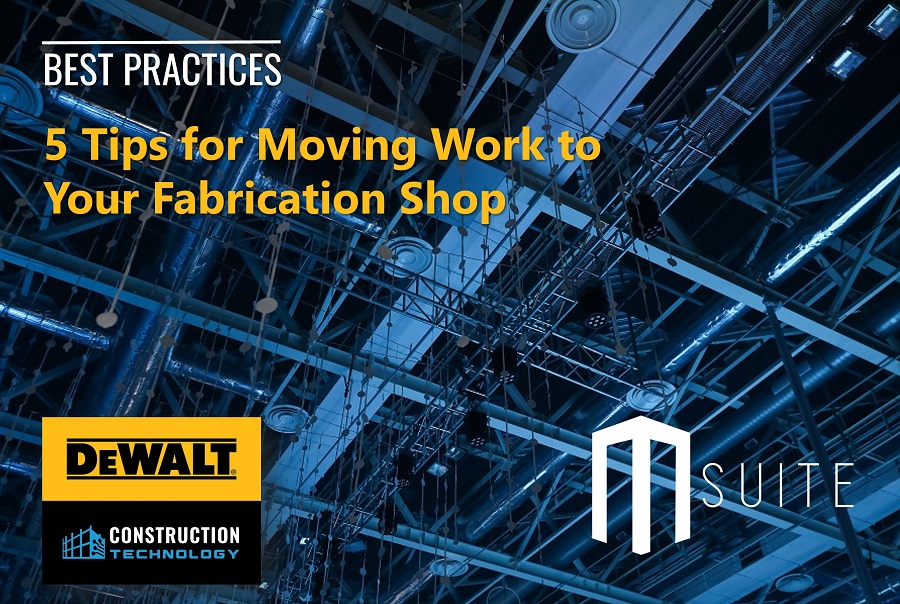As the prefabricated pipe and metal market becomes increasingly competitive, fabricators must seek out innovative ways to expand their capabilities and improve profit margins. One effective method is to move more work into the fabrication shop. Fabricators can operate more efficiently and reduce staffing costs by automating machinery, revamping workflows, integrating design with fabrication, investing in resource-tracking solutions, and utilizing advanced robotics and automation. These tactics increase accuracy, speed, and efficiency and lead to a more streamlined and prosperous business model.
The fabrication shop can become the heart of a thriving business, as high-quality work and reliable service will attract repeat customers and new referrals, ultimately driving revenue growth. Expand your capability and improve profit margins by moving work into the fabrication shop.
1. Automate Your Machinery
Introduce automated machinery to increase efficiency and reduce workforce costs.
Automating machinery within your fabrication shop is essential to increase productivity while reducing staffing costs. Introducing automated machines to your manufacturing plant is a cost-effective and efficient option for businesses looking to boost their bottom line. Consider implementing automated pipe profiling, hangar fabrication, and other repetitive processes to empower your company to compete more effectively in today’s changing market conditions. Automated machinery delivers increased speed and accuracy and ensures that every component produced in your shop meets the highest quality standards.
With automated machinery, you can reduce the cost of labor and decrease the possibility of errors that can occur from manual labor. Investing in automated machinery can help you streamline your manufacturing process and reduce labor costs, saving you time and money in the long run.
2. Revamp Your Workflows
Assess your current workflows to identify areas that could be improved.
In today’s highly competitive business environment, fabricators must focus on workflow optimization. Revamping workflows to identify areas that could be improved, such as the entire design to fabrication workflow; the progression through work areas in the fabrication shop; and evaluating which assemblies can be prefabricated as opposed to constructed in the field, are exceptional strategies. By doing so, fabricators enhance operational efficiency, translating into substantial cost savings and superior product quality.
Successfully implementing this would require a multi-disciplinary approach to workflow planning incorporating the latest technological advancements, operational data analysis, and strategic planning. Furthermore, it also requires a cultural shift within the organization, where all employees are committed to delivering a superior customer experience.
Overall, the success of a fabricator largely depends on the ability to revamp its workflows proactively, rather than reactively, to stay ahead of the competition.
3. Integrate Design with Fabrication
Ensure design and fabrication teams work together efficiently.
Efficiency is everything in a fabrication shop. Improving the alignment between design and fabrication teams is a great way to streamline production. By integrating design and fabrication, the teams can work together efficiently to reduce project turnaround time and minimize project specification errors. Fabricators can bring in more work by offering a complete solution to meet clients’ needs.
When design and fabrication teams work together, innovative ideas and efficient solutions can be created to improve the end product. A collaborative approach ensures the final product is designed with a practicality that fabricators can deliver. Integrating teams and communicating with one another ensures that the final product meets design and manufacturing requirements in an industry where every error can be costly.
4. Invest in Resource Tracking Solutions
Implement technology that can track resources in real-time for more accurate job costing.
In today’s rapidly evolving technological landscape, fabricators who invest in resource-tracking solutions stand to gain a significant competitive edge. By implementing cutting-edge technology that can track resources in real-time, fabrication shops can gain critical insights into their operations, enabling more accurate job costing and better project management.
Improving job costing accuracy is crucial, as even minor errors accumulate over time, ultimately eroding profitability and limiting growth opportunities. With resource tracking solutions, fabricators can better understand the costs associated with each job, making it easier to optimize workflows, manage resources more efficiently, and ultimately, bring more work into the fabrication shop. By adopting such solutions, fabricators can position themselves for success in an ever-changing marketplace, delivering high-quality results that exceed customer expectations.
5. Utilize Advanced Robotics & Automation
Incorporate robotics and automation into production for increased accuracy, speed, and efficiency.
As technology continues to evolve, robotics and automation have become increasingly popular in various industries, including fabrication. Incorporating advanced robotics and automation into a fabrication shop’s production process can help increase safety, accuracy, speed, and efficiency. Not only does it provide a quicker turnaround time, but it also allows for more complex and precise designs. By investing in and utilizing this technology, fabricators can attract skilled workers who seek to gain experience using automated welding technology and other advanced systems. It’s a smart move for any business that wants to remain competitive in today’s market.
Moving more work to your fabrication shop: A Beginner’s Guide
Moving more work to your fabrication shop can feel daunting, but it is essential for expanding your business and improving your overall efficiency. One effective way to make this transition is to focus on streamlining a single process or standard assembly. By doing so, you can minimize disruptions and improve adoption.
Start by evaluating your current processes and identifying areas that are particularly time-consuming or prone to errors. Once you have identified your target area, work with your team to develop an optimized process that can be consistently applied in your fabrication shop. This step-by-step approach will help you move more work to your fabrication shop and lay a foundation for future operational improvements.







